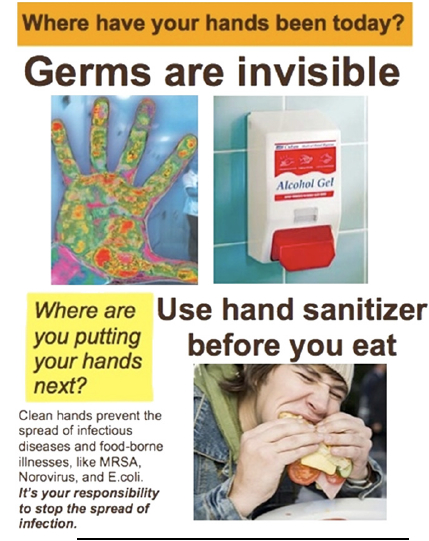A dining hall at Chapman University (no relation) was closed over the past couple of days after students came down with nausea, vomit and diarrhea. According to The Panther, health authorities believe that the illnesses are linked to a norovirus outbreak.
According to an email sent by Jerry Price, dean of students and vice chancellor for student affairs, the cafeteria will reopen for breakfast on Dec. 7 and throughout the weekend food will be available in the Student Union for students with meal plans.
“It doesn’t make me scared necessarily, however it’s a bit concerning since I’m on a 19 meal plan and I get a majority of my meals from the cafeteria,” wrote Michael Anderson, a sophomore television writing and production major. “When I pay an average of over $10 a meal I expect quality food and not poisonous meals.”
Kyler Asato, a freshman creative writing major, had lunch at the cafeteria last Wednesday and then lost his appetite. On Thursday he did not eat until 5:20 p.m. after nearly fainting during his dance class.
Asato said that he ate a sandwich and muffin from the Digital Media Arts Center. He then had a pizza from Doy’s Place which caused him to vomit.
“I went back to my room after around 45 minutes of not being able to move due to lack of energy,” Asato wrote. “Then, I had my friend give me Sprite, and went to sleep around 10. I woke up three times and barfed each time. I also had diarrhea at least four times throughout the day, starting from 11 a.m.”
Sounds nasty.
Brae Surgeoner, Doug and I had a paper published in the September 2009 Journal of Environmental Health about some research we conducted in the Winter of 2006. The study came about because a whole bunch of kids in the University of Guelph’s residence system started puking from an apparent norovirus outbreak. There were lots of handwashing signs up and we wanted to know whether they changed hygiene behavior (especially if kids were using the tools available when entering the cafeteria). Turns out that students weren’t doing as good of a job at hand hygiene as they reported to us.







.jpg) between October 17 and November 4.
between October 17 and November 4. on the team was Ben Chapman, assistant professor in the department of 4-H youth development and family and consumer sciences at North Carolina State University.
on the team was Ben Chapman, assistant professor in the department of 4-H youth development and family and consumer sciences at North Carolina State University..jpg) vomiting and stomach aches and then another fifteen minutes they were just coming in students were coming in we had a total of 102 students who were registered with the vomiting.”
vomiting and stomach aches and then another fifteen minutes they were just coming in students were coming in we had a total of 102 students who were registered with the vomiting.”